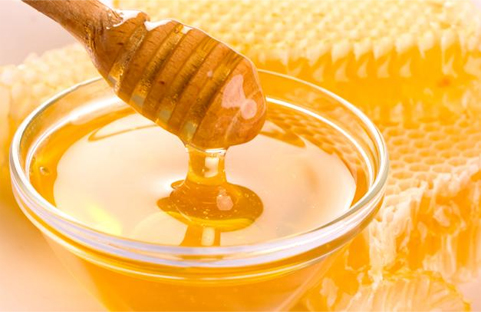نحل العسل الافريقي أكثر كفاءة تحويل البروتينات الغذائية إلى بروتين الدملمف من النحل الكارنيولاني (أبيس مليفيرا كارنيكا) Africanized honey bees more efficiently convert protein diets into hemolymph protein than do Carniolan bees (Apis mellifera carnica)
نحل العسل الافريقي أكثر كفاءة تحويل البروتينات الغذائية إلى بروتين الدملمف من النحل الكارنيولاني (أبيس مليفيرا كارنيكا)
Africanized honey bees more efficiently
convert protein diets into hemolymph protein
than do Carniolan bees (Apis mellifera carnica)
F.A. Cappelari, A.P. Turcatto, M.M. MoraisAfricanized honey bees more efficiently convert protein diets into hemolymph protei
nthan do Carniolan bees (Apis mellifera carnica) and D. De Jong
ملخص
تفوق الأفارقة على العسل الأوروبي النحل في المناطق الاستوائية وشبه الاستوائية من العالم الجديد على حد سواء موثقة جيدا وغير مفهومة جيدا. كجزء من محاولة لمحاولة لفهم العملية التي من خلالها حدث تشريد النحل الأوروبي ، فحصنا قدرة هذين النوعين من النحل والهجين بين الاثنين لتحويل النظم الغذائية الطبيعية والاصطناعية في البروتين صالحة للاستعمال. ظهرت حديثا النحل من مستعمرات تروبيكال تكيفت النحل الكارينيولاني في أفريقيا ومعتدلة المنشأ وجيل الأول هجين بين اثنين من قفص وتغذية الاصطناعي والحمية الغذائية الطبيعية لمدة ستة أيام لتحديد ما إذا كان هناك كانت هناك اختلافات في قدرتها على استخدام هذه النظم الغذائية. الأفارقة النحل تطوير مستويات البروتين أعلى بكثير في الدملمف من النحل الكارنيولاني. وكان الفرق 31٪ عندما النحل (37.5 و 28.56 ميكروغرام من البروتين / الدملمف ميكرولتر، على التوالي). وضعت الهجينة مستويات البروتين المتوسطة بين نوعين الوالدين. وكانت هذه 10 مرات تقريبا والمستويات الموجودة في النحل تغذية مع السكروز وحدها. تحويل الأغذية متفوقة قد تكون كفاءة النحل الإفريقي أحد الأسباب
لتفوقهم سواء في البرية أو لتربية النحل في المناطق الاستوائية وأمريكا اللاتينية شبه الاستوائية.
Abstract
Africans outnumber the European honey bees in the tropical and subtropical regions of the New World both well documented and poorly understood. As part of an attempt to try to understand the process through which the European bee displacement occurred, we examined the ability of these two types of bees and the hybrid between the two to convert natural and synthetic diets into usable protein. Newly emerged bees from the Tropical colonies adapted the Carinolian bees in Africa and the mild-origin and first-generation hybrid between the two cage and the artificial feed and natural food diet for six days to determine whether there were differences in their ability to use these diets. African bees develop significantly higher protein levels in the dermalof the Carniolian bees. The difference was 31% when bees (37.5 and 28.56 μg protein / μl dlMMF, respectively). Hybrids developed intermediate protein levels between the two parental types. These were approximately 10 times the levels found in bees fed with sucrose alone. Transforming superior foods African bee efficiency may be one of the reasons
For their superiority both in the wild or for beekeeping in tropical and sub-tropical Latin America.




